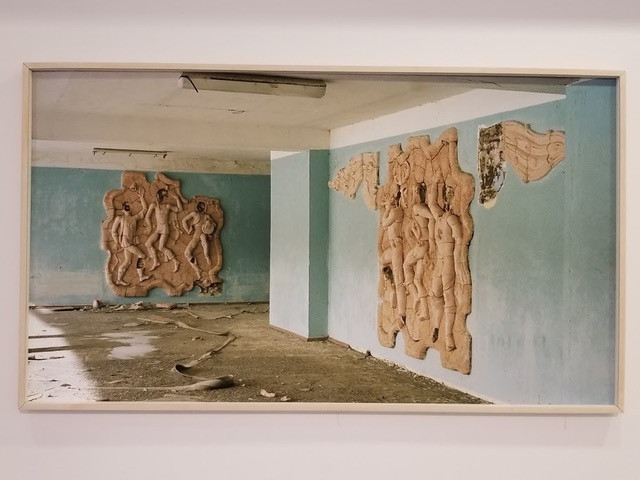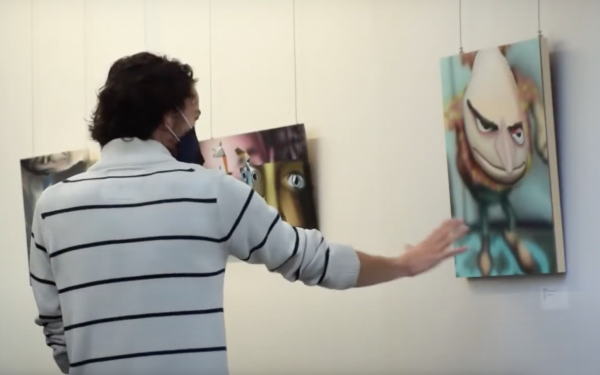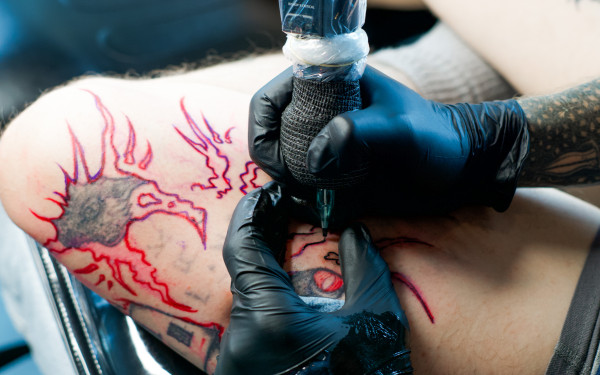Underground visual arts exhibit ‘Sous la Terre’ showcases emerging artists
Concordia fine arts student among the artists featured at live exhibit
Sous la Terre is pushing boundaries and raising funds for various charities with the art of twenty emerging local artists from Oct. 4 to 11.
The exhibit aimed to showcase the work of both local and international emerging artists who, like exhibit organizer and curator Zachary Bleau-Prevost, seek to create a space in which they challenge themselves and push boundaries.
Although Montreal has been declared a COVID-19 red zone, Bleau-Prevost said art provides a lifeline in difficult times. “Right now, we’re all in our bubble and we can’t really see much of the real world,” said Bleau-Prevost, whose own collaborative photograph collages are among the artworks on display. “It was a way for me to put some colour in people’s lives.”
The exhibit, held at the Plateau-Mont-Royal’s Work In Progress gallery, has been showcasing different works on each day of the week. For every artwork sold, half of the proceeds go to a charity of the artist’s choosing and are matched by the gallery as a donation, Bleau-Prevost explained. “It’s a vision of collaboration and of community,” he said.
“I work underground and I feel that connection and energy to the ground,” said Bleau-Prevost, whose personal studio lies underneath the gallery. The other artists being showcased also work “underground and under the radar,” he added.
“I feel it was almost a blessing to have a limit on people entering the gallery because it makes it feel like a private experience, almost an immersive experience,” he said.
The ambient, electro-acoustic music, he explained, is an equally vital part of the Sous la Terre experience. “The sound brings you to another planet because music brings you to another dimension. You should lose yourself in art,” he said.
“The sound brings you to another planet because music brings you to another dimension. You should lose yourself in art.”
— Zachary Bleau-Prevost
Mireille R. Champagne, a Concordia University fine arts student and model, described her surreal self-portrait as a work in progress. The painting, titled Millen is based on a photo taken of her during a photoshoot she did for the rock band Muse.

“I’ve always been fascinated by the female figure, always looking into magazines, influenced a lot by advertisements and the modeling business,” she said.
Champagne started painting and modeling at the age of fifteen and began to focus on her own body as the subject of her work after returning from modeling in China.
“My main angle is the body of the woman, more so about my own image that has been worked and reworked and photoshopped again over my life,” she said. “Through painting I’m trying to re-appropriate my own image. It’s kind of a theatre for me, like creating my own photoshop within the canvas. I’m distorting my own body within a contemporary language of my life. It’s also a statement about what it is to be a woman.”
Dominating the wall on the left-hand side from the gallery’s entrance is the work of painter Ludovic Mio. Mio did not have a clear path into the art world. In fact, he never studied art formally.
After dropping out of high school, he started experimenting with graffiti and then began painting school theatres and murals. This summer he worked on twelve murals in the boroughs of Rosemont and Villeray. “Graffiti evolved into fine art,” he said.
Mio’s abstract double feature, Hashirama and Tobirama, is inspired by characters in the Japanese anime series _Naruto,_which he often watches when painting. “For me, it was the way I deconstruct each character into shape and forms to represent the way I see them,” he said.
A series of photographs hang on the other side of the gallery. Bakuriani Looting is one of Alexis Paradis’s featured prints. The photographer, now art dealer, captured the shot of a low-relief sculpture while working on a 2019 snowboarding equipment photoshoot in a Georgian ski resort. He said he was looking to get the right angle to shoot from the hotel hallway when he stumbled upon the faceless sculpture.
“I was intrigued by the missing faces,” he said. “I thought it was very special.”
Correction: A previous version of this article misspelled Zachary Bleau-Prevost’s last name as Bleau-Provost. The Link regrets this error.

_600_832_s.png)

_copy_600_375_90_s_c1.jpg)

